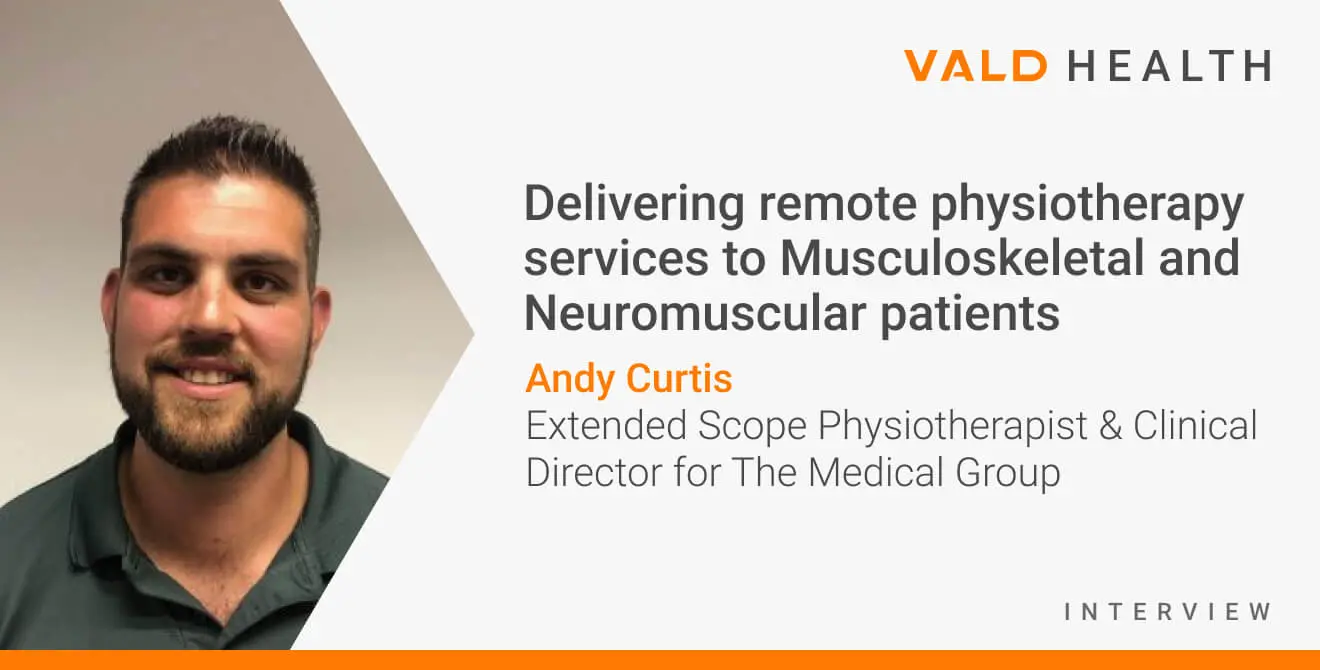Delivering remote physiotherapy services to Musculoskeletal and Neuromuscular patients
Available in:
EN
Andy Curtis is an Extended Scope Physiotherapist and Clinical Director for The Medical Group in the south of England.
Spread across 21 clinical sites, Andy’s teams use TeleHab from VALD Health to deliver remote physiotherapy to their MSK and neuro patient population, and HumanTrak in clinic, for 3D motion and biomechanical assessment.
The case study originally featured on the Chartered Society of Physiotherapy and can be found here.
What physio services do you provide?
Musculoskeletal and Neuromuscular Physiotherapy.
We have an extensive team of physios from newly-qualified to regional leads, working through Bristol, Bath, Newport, Reading, Didcot, Cheltenham, and Bournemouth.
As a result, we work with a wide spectrum of conditions from sports and work-related injury, to long-term conditions, medicolegal cases, growth development issues, and home visits for mobility or independent living needs.
What tools are you using to deliver your physio services digitally?
We’ve used several exercise prescription and video consultation platforms over the recent years but settled on using TeleHab by VALD.
This is a platform we were introduced to as we also use VALD’s HumanTrak system in clinic for 3D motion and biomechanical assessment, and found it to be intuitive, simple to initiate a video consultation and can easily move through to program builder to send home exercise plans following either a virtual or face to face session.
How have these services replaced face to face contact? We have used virtual sessions previously for patient preference, as a follow-up or progression session, but currently, it has become more readily used for the ‘virtual first’ aspect of our COVID-19 workflow.
TeleHab has allowed us to effectively manage many cases entirely virtually, and make the reasoned decision to complete a face to face session without risk to the patient or team member.
What is the clinician’s experience of using the digital tools?
Overall, very positive, but it’s not like working directly with a patient.
Healthcare is very humanistic and requires trust and rapport, which seems to be a little longer in developing through virtual means.
However, once built, the blend of virtual and face to face is very effective.
Also, with App-based exercise prescription being more informative and interactive, patient adherence seems to be up too – it helps to be able to track their progress via the app, making them a little more accountable than the offline methods do!
It is more difficult to complete a thorough assessment, for obvious reasons, via virtual consultation, but generally, where there is a will there is a way! Physio is about problem-solving after all.
Any top tips to others exploring using digital tools in physio services?
Use a system that minimises the time wastage during a session.
Some platforms have a convoluted process of going from appointment time to consultation invite to starting the consultation.
The more well thought out platforms are slick at this, and this is one reason we opted for the TeleHab system.
Ensuring simple workflow but within data security requirements is the key to good user experience, I think.
Also, look into how the aftermarket support is.
TeleHab has a really in-depth exercise library, but on occasion, when something bespoke we would like to use is not there, or not easily searched for, we have had the support on hand to complete an effective patient outcome regardless.
Interested in learning more about TeleHab?
For further information on how TeleHab can help you and your clinic, visit our TeleHab page – here.
